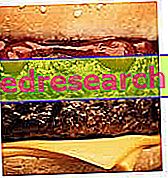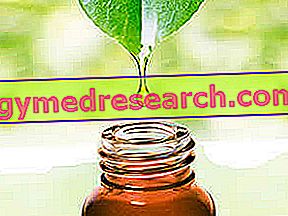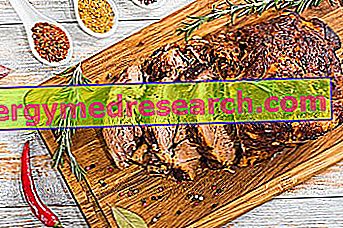Importance of a Healthy Liver
The liver is the most generous organ of our organism, a tireless and multipurpose worker essential for good health and indispensable for life.
The liver carries out tasks of:
- storekeeper (serves as a nutrient store, such as glycogen, some minerals, see iron, and several vitamins, especially B12 and fat-soluble ones),

- street sweeper with a strong propensity to respect the environment (it is the most active organ in detoxification processes and also plays an immune role),
- producer and distributor of energy (processes food substances and produces new ones to meet specific needs of the body),
- autotransporter (synthesizes many plasma proteins such as albumins and some globulins, as well as specific hormone and nutrient carriers, see lipoproteins)
- traffic controller (regulates the various metabolic pathways also thanks to the production of hormones).
If all this were not enough, the liver also has numerous health skills; for example, it is able to repair itself when it is injured and synthesizes proteins necessary for the blood coagulation process.
Diet and Liver Disorders
Obviously, however effective it may be, the liver certainly cannot do miracles. If the amount of toxins to be treated is excessive, its purifying capacity becomes saturated and these substances return to the bloodstream with all their dangerous load.
Overeating is one of the reasons for its malfunction because it prevents the liver from also engaging in the detoxification of the organism, as well as in the synthesis and processing of nutrients.
On the other hand, a healthy and balanced diet, rich in antioxidants, helps it to get rid of toxic substances, such as drugs, alcohol, pathogens, metabolism residues, dead cells, dioxin, caffeine and pesticides, without the hepatocytes being damaged important.
Nutritious friends of the liver, such as vitamin A, C and E, in addition to selenium and glutathione, are found mainly in fruit, fish, vegetables and whole grains.
An important step in the detoxification process is the conjugation of the toxic agent with substances that increase its solubility in water; in this way the waste products can easily be expelled with urine or faeces (in this case only after having been poured into the intestine with bile). For this phase to be efficient, liver cells require sulfur-containing amino acids such as taurine and cysteine. Eggs and vegetables, such as cruciferae (broccoli, squash, brussels sprouts, cauliflower, etc.), but also garlic, onion and leek, are all excellent natural sources of sulfur.
If the detoxification process is ineffective, for example due to a diet rich in fried foods, saturated fats and grilled foods, but at the same time poor in fiber, fruit and vegetables, toxins tend to accumulate in the body. Many of these, being liposoluble, accumulate in lipid-rich tissues, such as adipose tissue, and are able to cross the blood-brain barrier that protects the brain.
According to some authors, the accumulation of fat by the organism can be interpreted, at least in part, as an attempt to protect itself from an excess of toxic substances resulting from an unregulated diet. On the other hand, the excess of toxins and in particular of ammonia would have negative repercussions on the whole organism (attention deficit, increased allergies and food intolerances, increased sensitivity to infections).
Foods Friends and Enemies
Liver friendly food | Enemy foods |
Consume fresh fruit and vegetables in large quantities; eat yellow, orange, purple, white and red vegetables: liver-friendly substances are associated with each color, such as fiber, antioxidant vitamins and phytochemicals (see: color diet). The fibers limit the absorption of toxic substances, facilitating their evacuation with feces. The fibers (prebiotics), together with yogurt and especially probiotics, improve the efficacy of the intestinal mucosa, which is an effective filter that, when it works well, is permeable to nutrients but does not allow the passage of toxins. Eat foods rich in glutathione or that favor the production of glutathione: asparagus, watermelon and broccoli are good sources of glutathione, as well as papaya, sulfur amino acids and avocado favor its production. Bitter foods like dandelion, artichoke, milk thistle, mustard, romaine lettuce and broccoli help in liver cleansing. Drink plenty of water (2 to 3 liters a day) because it helps the kidneys expel toxins from the liver. Fish is a good source of Omega-3s, which have a powerful anti-inflammatory activity, and selenium, an excellent antioxidant that helps the liver in detoxification processes. When cooking, cook for little or just enough, never overdone. | Foods rich in saturated fats, such as sausages, cold cuts, pancetta, butter, cheese, whole milk and eggs (yolk). Other foods to avoid are fries, because during the cooking process at high temperatures toxic substances are produced, such as acrylamide. Dangerous fried liver and salty snacks are therefore dangerous foods for the liver. Limit refined foods like sweets, sugar, white rice, cakes, sweets and sweets of all kinds. The liver would indeed be heavily engaged in metabolizing the excess of simple sugars. Abundant meals overload the liver with work. Minimize the consumption of alcohol (no more than a glass of wine or a can of beer per day for women, up to twice for men), smoking, both active and passive, and avoid food rich in preservatives dangerous, such as nitrites present in cured meats and preserved meats. Moderate the consumption of coffee and chocolate. Limit consumption of high-calorie, high-fat foods; all this facilitates the maintenance of an optimal weight and removes the risk of steatosis, that is the excessive accumulation of triglycerides in the liver, a condition typically associated with obesity. |




